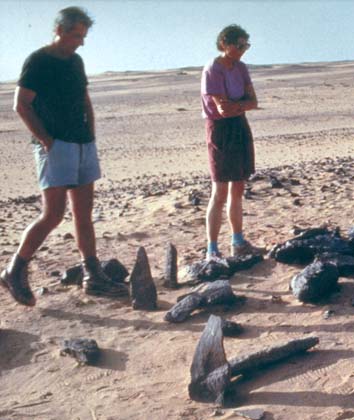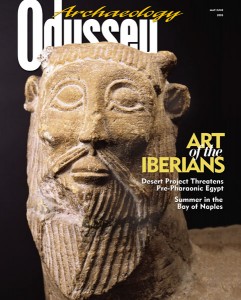Drowning the Past
Desert project threatens pre-pharaonic Egypt

For about 5,000 years, Egypt’s Southwest Desert, west of Lake Nasser, has been a hellish, lifeless, hyper-arid region of barren rock and sand. But that wasn’t always so. Archaeologists surveying this part of the Sahara have found ancient remains of lakes, villages, cattle bones, burial tumuli and huge megaliths aligned with the heavens.
With the coming of the dry period, when the rains stopped and the lakes disappeared, the people who herded these cattle and built these monuments migrated somewhere, probably into the fertile Nile Valley. Is it possible, then, that they contributed to the development of pharaonic high culture, which first appeared along the Nile in the early third millennium B.C.? Did their tradition of astronomical observation have an influence on the pyramid-builders?
Only further archaeological investigation can answer these questions—and that may soon be impossible. This area of southern Egypt has been designated the Land of Promise; it is part of the Egyptian government’s long-term plan for agricultural expansion. Within about 20 years, the so-called Toshka Project, named for a depression in the Southwest Desert, is supposed to bring six million people to the area, many of them to work on its new farms. Whole cities are being planned, complete with schools, stores, health clinics, businesses and tourist facilities.
Already a library member? Log in here.
Institution user? Log in with your IP address.

